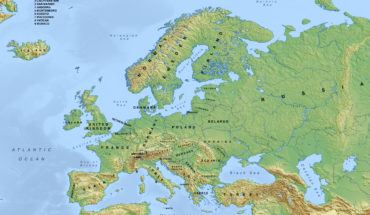Crete is a beautiful island steeped in tradition, stemming from its glorious and varied history. Knossos, during the Minoan era, was undeniably the capital of Crete and there, in the palace, lived kings, queens and beasts of myth and legend. An absolute must if you’re visiting the Greek island for any length of time and even better if you’re a student, as it’s free if you have your ID card with you.
Myth and Legend
From about 8000 BC, the area of Knossos is said to have been inhabited by a Neolithic people, who remained and developed with civilisation until the Minoans appeared around 3400 BC. Situated only 5km south of Heraklion, there was bound to be some mythical action in this area – specifically, the action of King Minos.
King Minos was a very particular sort; he was often bored and took to attacking the Athenians when he had nothing better to do. Underneath the palace of Knossos, it is said that there was a labyrinth and within this labyrinth lived a terrible monster, half man half bull – The Minotaur! The poor Athenians had to send their children – seven boys and seven girls – every nine years to sate the beast in order to stop king Minos from attacking.
This obviously wasn’t ideal so they sent the story’s hero, Thesius, to slay the beast and slay it he did. Or so the story goes.
Around the Ruin
Needless to say this is an interesting cultural heritage site and there is much to be admired, so make sure that when you travel here, that your camera is charged. That said, no mere photograph could capture the atmosphere.
The palace ruins are littered with beautiful examples of the ceramic pottery that the crafty Minoans were capable of creating, as well as some beautiful, original fresco paintings which really illuminate their desire for art. Used specifically for religious ceremonies, the ancient site of Knossos has retained its architectural quality, as citizens did not live within the grounds. The Minoan people were quite clearly adept engineers – there are many examples of complex carpentry involved in the structure of the buildings.
Much of the site has been restored as a means by which to preserve it, but to the dismay of many archaeologists, this restoration went beyond a simple effort to preserve – it became a total reimagining, based on the imagination of Sir Arthur Evans – the man who discovered the site. Because of this, some of the magic of the place seems removed, but of course this is something you should judge for yourself.
Getting There
Getting to Crete is incredibly simple if you’re travelling from the UK – Once you’ve made the decision to go, you’ll need to get yourself along to a major airport like Stansted (this can be done by coach, train or by car). If you have a family you’ll probably want to have a look at the car parking at Stansted to save yourself some hassle.
Once in Crete, as it’s a small island, the best way to get to the palace is either by car (if you’re renting one, or by taxi.


